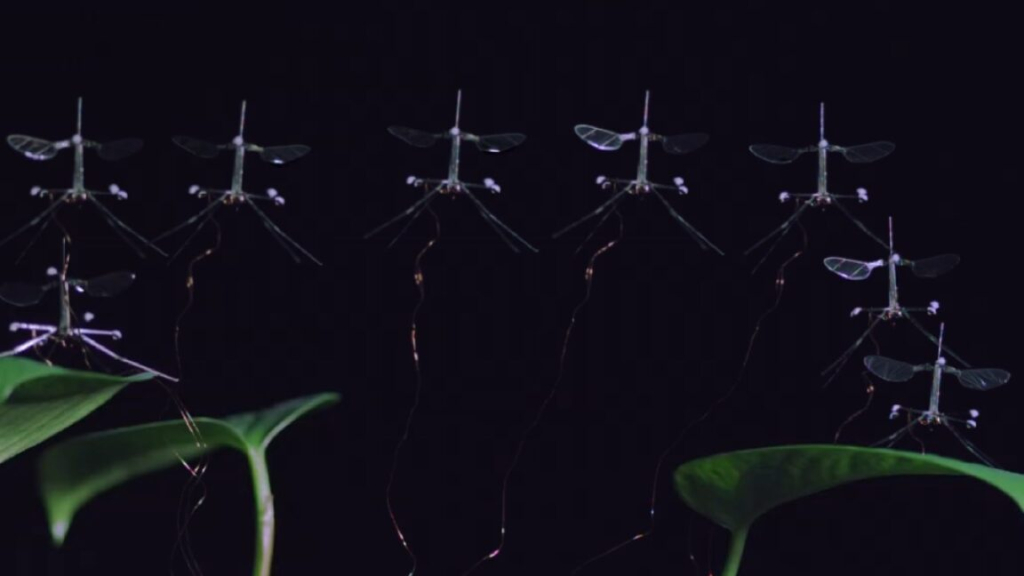The RoboBee is only slightly larger than a penny.
Credit:
Harvard Microrobotics Laboratory
Researchers have conducted a series of experiments to study the performance of newly engineered robotic legs and joints designed for the RoboBee. The investigations began with manually disturbing the legs and recording the resultant oscillations via high-speed video. This process revealed that the leg and joint systems function similarly to an “underdamped spring-mass-damper model,” exhibiting some characteristics of “viscoelastic creep.”
The team then advanced to free-fall tests using small fiberglass models that mimicked the mass and inertia of the RoboBee. Each fall was also captured on high-speed video to analyze landing impacts. Different takeoff and landing methods were explored to enhance operational efficiency.
Subsequently, experiments were conducted with RoboBee, where the robot successfully took off from one leaf, hovered, moved laterally, and landed on another leaf multiple times under varying conditions. The experimentation setup closely resembled previous tests, with the addition of a plant branch placed in the motion capture area. This allowed RoboBee to land efficiently on uneven surfaces across repeated trials.
Looking ahead, researcher Wood’s team aims to enhance mechanical damping for safer landings, drawing inspiration from the landing techniques of stingless bees and mosquitoes. There is also a plan to scale the technology for larger robotic vehicles, necessitating an analysis of more complex leg designs. Currently, RoboBee remains connected to off-board control systems, but the team aspires to integrate onboard electronics and sensors eventually.
“The long-term goal is full autonomy,” Wood stated, “but for now, we are addressing electrical and mechanical challenges using tethered devices.” He noted that the safety tethers have been obstructive during testing, thus ensuring safe landing is pivotal for their future experiments. Achieving this autonomy would broaden the application potential for RoboBee, including roles in environmental monitoring, disaster response, and artificial pollination through coordinated swarms.
Science Robotics, 2025. DOI: 10.1126/scirobotics.adq3059 (About DOIs).






